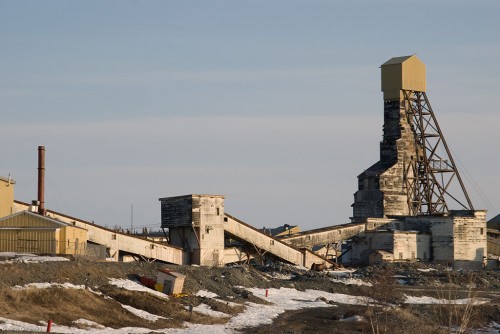 Canada’s oil sands region has been gaining international recognition as a monstrous environmental liability, its vast tailings ponds made beautifully ghastly by Ed Burtynsky’s aerial photography. By some measures, though, Canada’s most polluted site is located less than three miles from where I put my son to bed, with a cup of tap water, every night.
Canada’s oil sands region has been gaining international recognition as a monstrous environmental liability, its vast tailings ponds made beautifully ghastly by Ed Burtynsky’s aerial photography. By some measures, though, Canada’s most polluted site is located less than three miles from where I put my son to bed, with a cup of tap water, every night.
I live in Yellowknife, Northwest Territories, a gold mining town until a decade ago, when the gold was phased out in favour of diamonds. The danger in this town is enough to kill everyone in the world more than once, so out of a regional population of 17,000 there’s plenty to go around: 237,000 tonnes of arsenic trioxide in water-soluble dust, just biding its time in the underground chambers of Giant Mine, walking distance from where I sit. Seven hundred tonnes of it still lurk in the abandoned gold-roasting complex above ground. Belatedly, “Caution” signs have appeared, to dissuade people from walking their dogs on the grounds.
On the skin or in the air we breathe, swallowed in water, arsenic trioxide is toxic in a rainbow variety of ways, acute and chronic. Both deadly and “sub-lethal,” symptoms hit any organ dependent on the proper functioning of potassium channels. For those of us who find the government communications to be opaque, we can only shrug and trust that living in a developed nation means that someone, somewhere, is testing for it, rigorously and regularly. But if that type of oversight were the case, then wouldn’t this situation have been prevented in the first place?
Bankruptcy seems just another part of the extraction industry’s business plan nowadays, so the $1 billion cleanup, set to begin this year, is to be footed by taxpayers. This won’t be a matter of trucking away the 325,000 cubic meters of contaminated soil – that would be even more costly and would risk spreading the stuff around. Instead, the plan is to freeze it all in place, in perpetuity, to stop the arsenic from infiltrating the groundwater.
This is no longshot scenario. A sinkhole right next to four of the underground chambers has been growing, and it lies between the mine and the local creek that runs directly into Great Slave Lake. That creek has already flooded the tailings ponds and will never be safe for drinking again – it carries 1,400 times the arsenic level acceptable for protecting aquatic life. But it would be much worse if it flooded the underground chambers and dumped their contents into the deepest lake in North America. Perhaps this spring.
I never thought I’d be one of those people. The ones who set up camp below an active volcano or build on a flood plain. The ones who stay put under an increasingly repressive dictatorship when they had the means to leave. But we evolved to fear the charging tiger.
Our minds just don’t know what to do with scenarios of low and uncertain probability. Rather than run around waving our hands in the air, we’re more likely to shrug and remark that the sky hasn’t fallen yet, and we can’t really imagine what that falling sky would look like. It’s amazing how the comforts of home and inertia serve as a sort of danger pay that seems commensurate with the risks – except, of course, in retrospect, when things go horribly wrong.
Bankruptcy part of a business plan……well put.